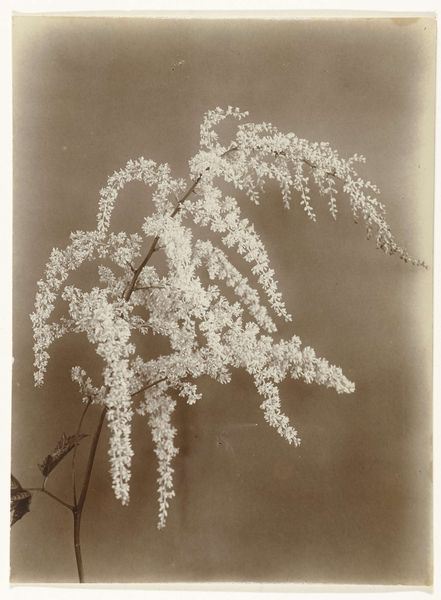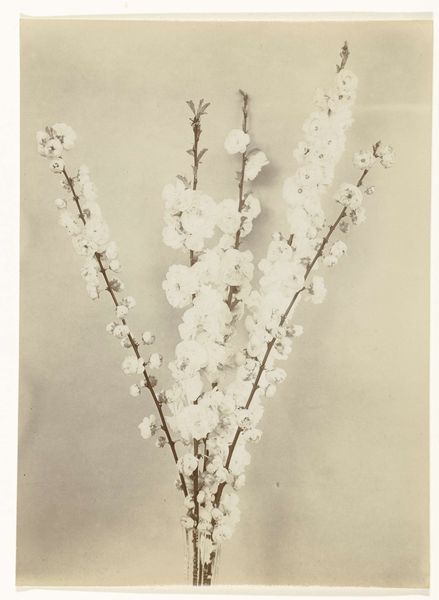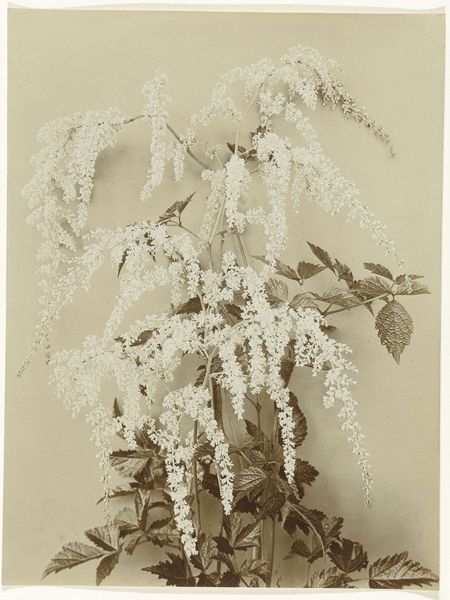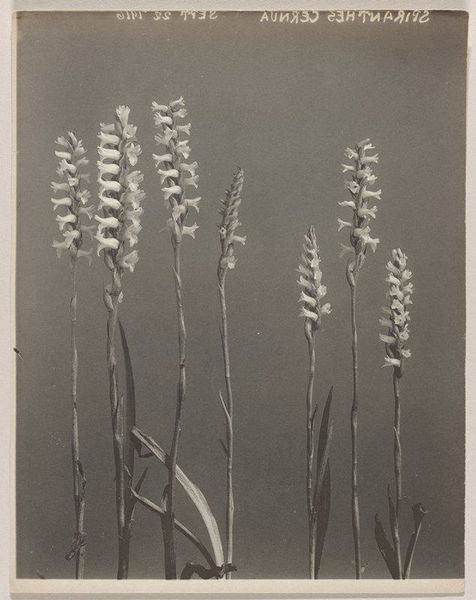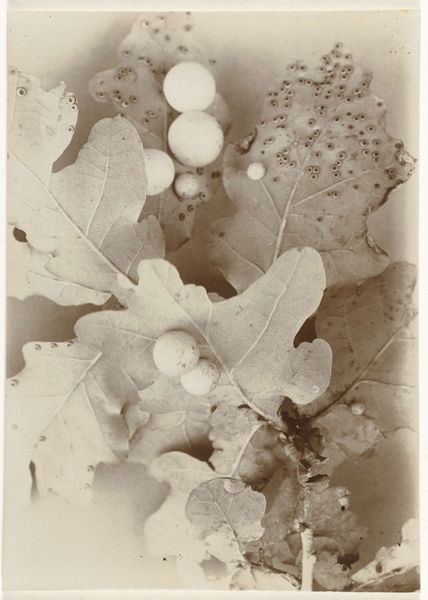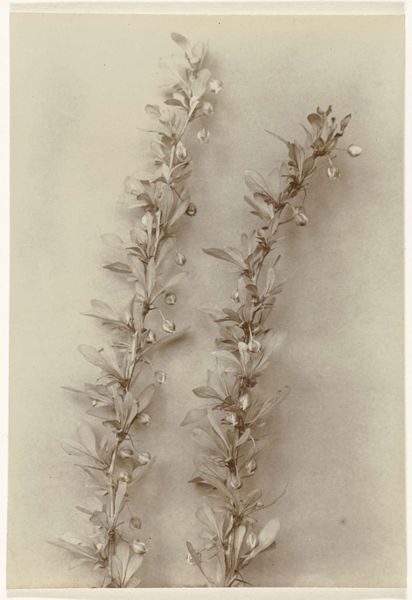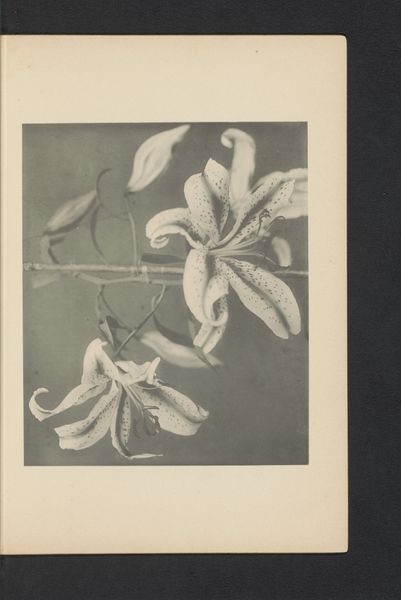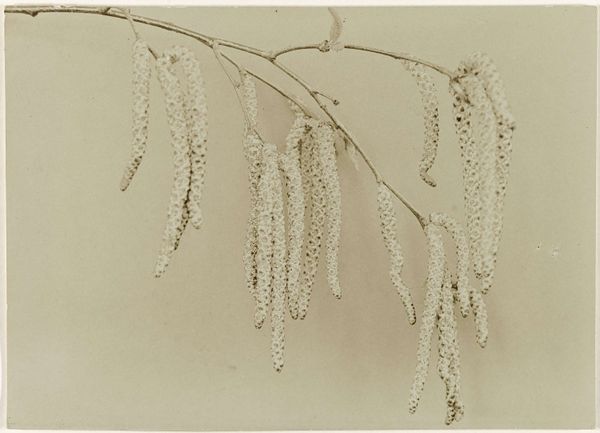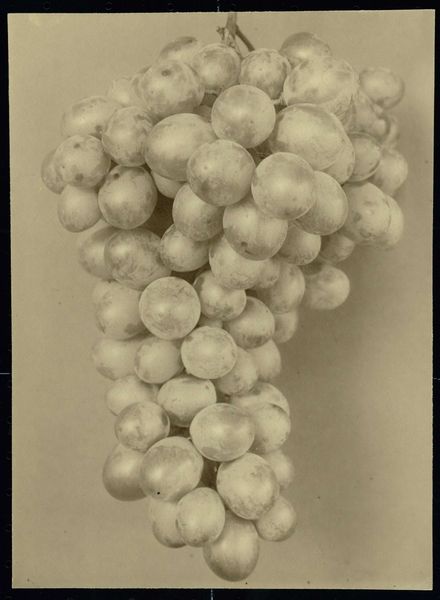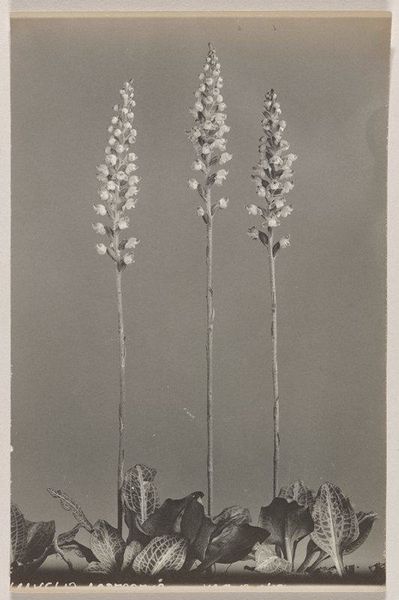
photography
#
still-life-photography
#
pictorialism
#
photography
#
naturalism
Dimensions: height 165 mm, width 114 mm
Copyright: Rijks Museum: Open Domain
Curator: What a delicate piece. This is Richard Tepe’s "Bloemen van de spierstruik," or "Flowers of the Spirea," taken sometime between 1900 and 1930. Editor: It possesses a fragile beauty. The sepia tones and soft focus give it a dreamy, almost ethereal quality. Is it a photograph or a drawing? Curator: It's a photograph, firmly within the pictorialist style. Tepe, though, was deeply interested in the natural world, aligning himself with naturalism. His work explored the boundaries between scientific documentation and artistic expression. He wasn’t merely recording but also interpreting. Editor: Interesting. So, the aesthetic manipulation—the soft focus and tonal range—it isn't simply decorative; it's a deliberate aesthetic choice with deeper cultural ties. The image is softened like an idealized memory, hinting at something just out of reach. Curator: Exactly! Tepe's family were bakers who introduced rye bread to the Netherlands, while Tepe was committed to the socialist movement. With these origins, you start to consider how the photograph and the image's subsequent circulation fit into the democratization of the fine art world at the time. He turned toward more commercially accessible means of display in his later years like postcard printing and publication. Editor: Right, the move towards accessible forms of art distribution raises intriguing questions about labor and material processes. The labor required to grow these flowering plants—and then the labor in staging the photo—makes us see photography as both documentation and, in this case, production. Curator: It does complicate notions around art as luxury! One can easily find similar images en masse; what distinguishes the individual work and its value within an artistic and cultural system? Editor: I'm seeing how these stylistic components— the delicate composition and subdued color—are not simply surface-level aesthetics; but how they are deeply interconnected with the societal position of Tepe and his labor practices. It really makes you consider who has the luxury to consume or contemplate a fine art image. Curator: That tension between representation and its underlying context is key to experiencing it, I think. Editor: Yes, considering both its aesthetic form and its socioeconomic implications gives so much to understand. Curator: Indeed! Hopefully, these added details provide you, our audience, an informed appreciation.
Comments
No comments
Be the first to comment and join the conversation on the ultimate creative platform.
